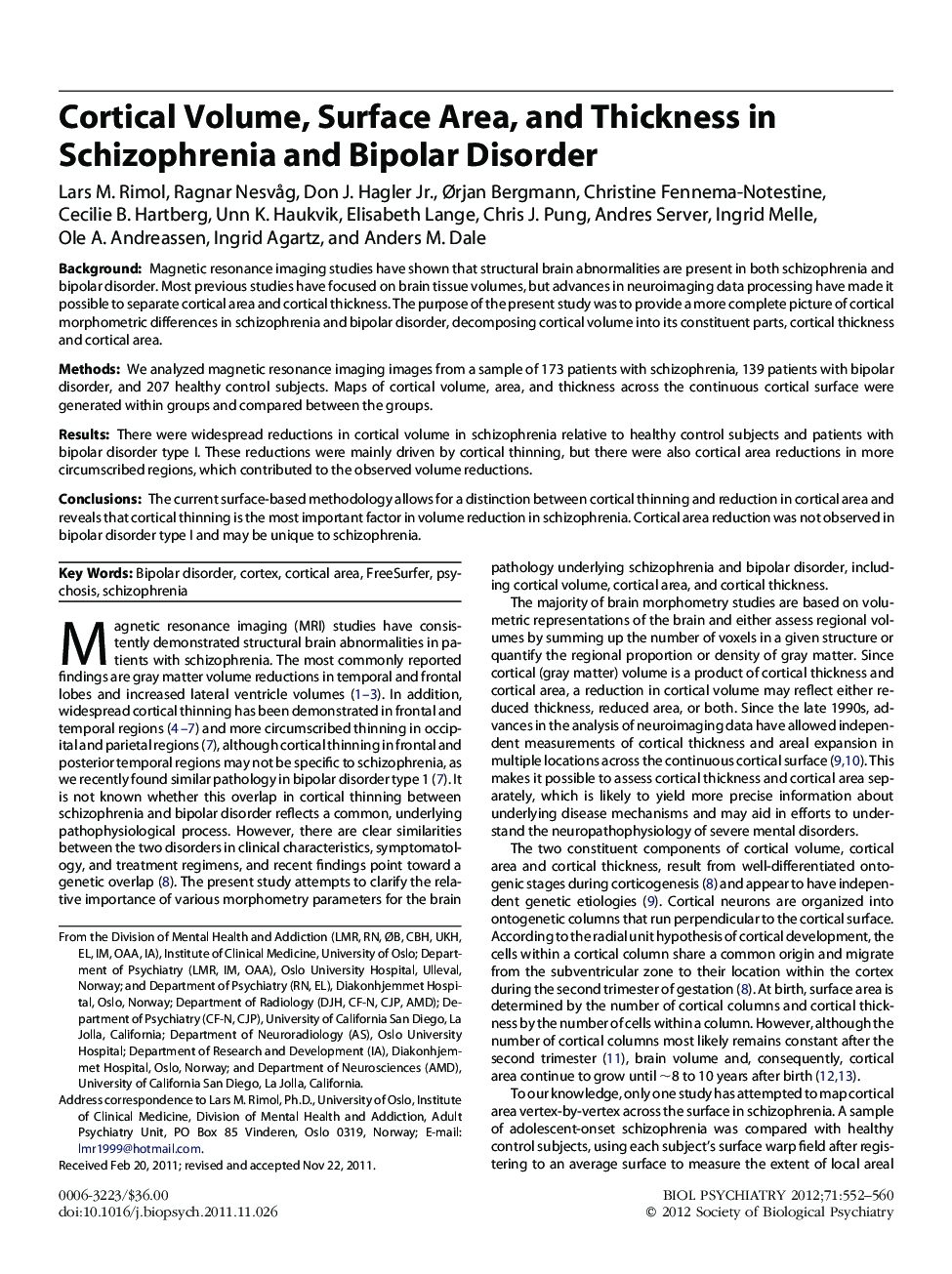| Article ID | Journal | Published Year | Pages | File Type |
|---|---|---|---|---|
| 6227898 | Biological Psychiatry | 2012 | 9 Pages |
BackgroundMagnetic resonance imaging studies have shown that structural brain abnormalities are present in both schizophrenia and bipolar disorder. Most previous studies have focused on brain tissue volumes, but advances in neuroimaging data processing have made it possible to separate cortical area and cortical thickness. The purpose of the present study was to provide a more complete picture of cortical morphometric differences in schizophrenia and bipolar disorder, decomposing cortical volume into its constituent parts, cortical thickness and cortical area.MethodsWe analyzed magnetic resonance imaging images from a sample of 173 patients with schizophrenia, 139 patients with bipolar disorder, and 207 healthy control subjects. Maps of cortical volume, area, and thickness across the continuous cortical surface were generated within groups and compared between the groups.ResultsThere were widespread reductions in cortical volume in schizophrenia relative to healthy control subjects and patients with bipolar disorder type I. These reductions were mainly driven by cortical thinning, but there were also cortical area reductions in more circumscribed regions, which contributed to the observed volume reductions.ConclusionsThe current surface-based methodology allows for a distinction between cortical thinning and reduction in cortical area and reveals that cortical thinning is the most important factor in volume reduction in schizophrenia. Cortical area reduction was not observed in bipolar disorder type I and may be unique to schizophrenia.
